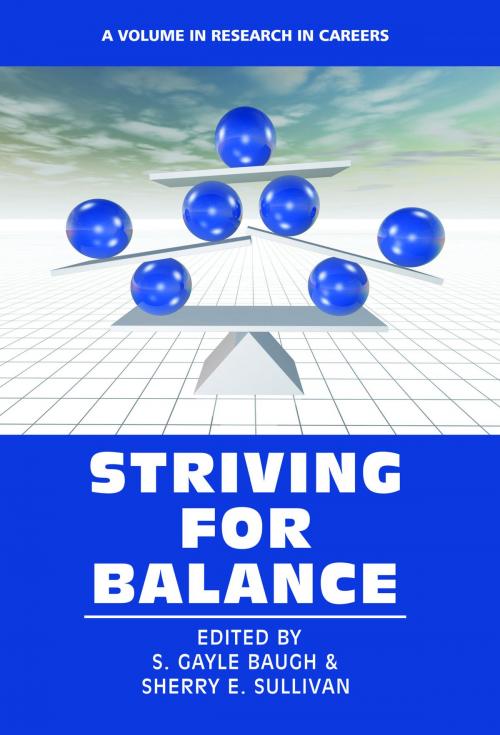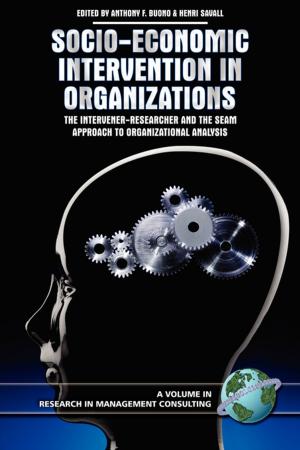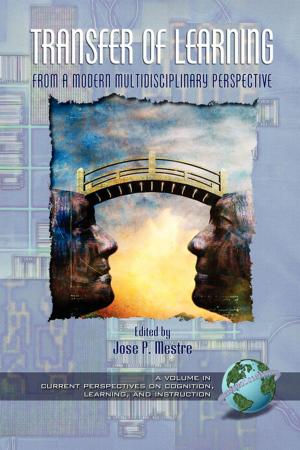Striving for Balance
Business & Finance, Career Planning & Job Hunting, Careers, Human Resources & Personnel Management| Author: | ISBN: | 9781681233062 | |
| Publisher: | Information Age Publishing | Publication: | January 1, 2016 |
| Imprint: | Information Age Publishing | Language: | English |
| Author: | |
| ISBN: | 9781681233062 |
| Publisher: | Information Age Publishing |
| Publication: | January 1, 2016 |
| Imprint: | Information Age Publishing |
| Language: | English |
The Research in Careers series is designed in five volumes to provide scholars a unique forum to examine careers issues in today’s changing, global workplace. What makes this series unique is that the volumes are connected by the use of Mainiero and Sullivan’s (2006) Kaleidoscope Career Model (KCM) as the organizing framework and the theme underlying the volumes. In this volume, Striving for Balance, we consider how individuals seek a healthy alignment between work and nonwork. In addition to building upon the established literature on work/family conflict, the chapters in this volume also examine the reciprocal positive influences between work and nonwork, considering such issues as balancing work with commitments to others, including spouse/partner, children, elderly relatives, friends, and the community. Chapters 1 and 2 of this volume focus on macro?issues surrounding work/nonwork balance, specifically studying the effectiveness of organizational policies. In Chapter 1, Westring, Kossek, Pichler and Ryan explore if there is a gap between an organization’s adoption of work/nonwork policies and its offering of a supportive environment for the employees’ use of such policies. In Chapter 2, Purohit, Simmers, Sullivan and Baugh draw from social exchange theory and the compensation literature to examine how employees’ satisfaction with their organization’s discretionary (i.e., not legally required) support initiatives influences their work?related attitudes and personal well?being. Chapters 3 and 4 examine balance from a micro perspective, focusing on generational differences in balance as well as how individuals’ reactions to work?nonwork conflicts influence career outcomes. In Chapter 3, Stawiski, Gentry and Baranik study balance using the lens of generational differences, exploring the relationship between work?life balance and promotability for members of the Baby Boom generation and Gen X. In Chapter 4, Boyd, Keeney, Sinha and Ryan discuss their qualitative analysis of how 1,359 university alumni’s reactions to work?life conflict events shaped their career choices, including entry, participation, and attrition decisions. Their approach offers a different lens to examine work?life conflict. Chapters 5 and 6 provide two perspectives on where scholars should focus their future research efforts in studying work/nonwork balance. In Chapter 5, van Emmerik, Bakker, Westman and Peeters provide a conceptual examination of the processes that affect work?family conflict, family?work conflict, and the overall resulting work/nonwork balance or imbalance. In Chapter 6, Bataille offers a multi?dimensional definition of work?family balance and develops a framework, which recognizes the dominant dimensions of workfamily balance.
The Research in Careers series is designed in five volumes to provide scholars a unique forum to examine careers issues in today’s changing, global workplace. What makes this series unique is that the volumes are connected by the use of Mainiero and Sullivan’s (2006) Kaleidoscope Career Model (KCM) as the organizing framework and the theme underlying the volumes. In this volume, Striving for Balance, we consider how individuals seek a healthy alignment between work and nonwork. In addition to building upon the established literature on work/family conflict, the chapters in this volume also examine the reciprocal positive influences between work and nonwork, considering such issues as balancing work with commitments to others, including spouse/partner, children, elderly relatives, friends, and the community. Chapters 1 and 2 of this volume focus on macro?issues surrounding work/nonwork balance, specifically studying the effectiveness of organizational policies. In Chapter 1, Westring, Kossek, Pichler and Ryan explore if there is a gap between an organization’s adoption of work/nonwork policies and its offering of a supportive environment for the employees’ use of such policies. In Chapter 2, Purohit, Simmers, Sullivan and Baugh draw from social exchange theory and the compensation literature to examine how employees’ satisfaction with their organization’s discretionary (i.e., not legally required) support initiatives influences their work?related attitudes and personal well?being. Chapters 3 and 4 examine balance from a micro perspective, focusing on generational differences in balance as well as how individuals’ reactions to work?nonwork conflicts influence career outcomes. In Chapter 3, Stawiski, Gentry and Baranik study balance using the lens of generational differences, exploring the relationship between work?life balance and promotability for members of the Baby Boom generation and Gen X. In Chapter 4, Boyd, Keeney, Sinha and Ryan discuss their qualitative analysis of how 1,359 university alumni’s reactions to work?life conflict events shaped their career choices, including entry, participation, and attrition decisions. Their approach offers a different lens to examine work?life conflict. Chapters 5 and 6 provide two perspectives on where scholars should focus their future research efforts in studying work/nonwork balance. In Chapter 5, van Emmerik, Bakker, Westman and Peeters provide a conceptual examination of the processes that affect work?family conflict, family?work conflict, and the overall resulting work/nonwork balance or imbalance. In Chapter 6, Bataille offers a multi?dimensional definition of work?family balance and develops a framework, which recognizes the dominant dimensions of workfamily balance.















